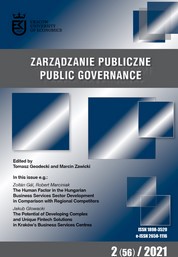The Human Factor in the Hungarian Business Services Sector Development in Comparison with Regional Competitors
The Human Factor in the Hungarian Business Services Sector Development in Comparison with Regional Competitors
Author(s): Robert Marciniak, Zoltan GalSubject(s): Business Economy / Management, Economic policy, Comparative politics, Higher Education , Financial Markets, Human Resources in Economy, Socio-Economic Research
Published by: Uniwersytet Ekonomiczny w Krakowie we współpracy z Wydawnictwem Naukowym Scholar
Keywords: regional development; business services sector; outsourcing; shared services; Hungary; Central and Eastern European region;
Summary/Abstract: Objective: The Hungarian Business Services Sector (BSS) is an important part of the CEE business services market. As this market is not homogenous, Hungary is in several aspects different from the other regional countries. The study aims to examine the market position of the Hungarian Business Services Centres (BSC) in the Central and Eastern European region with special attention paid to the available human resources and the comparison of its advantages and disadvantages with that of Poland, the Czech Republic, Romania, and Bulgaria as the main competitors. Research Design & Methods: The research is based on literature review and statistical comparison made using databases of international and national business services associations and national statistical organisations. Findings: First, the study explores the literature on the development of the global, regional, and Hungarian BSS. Then, through a comparative statistical analysis, it presents the situation of the Hungarian market within the CEE region. The development of the region’s business services sectors was unbroken between 2015 and 2020, but there was a downward trend as to growth in most countries in terms of the number of employees. Implications/Recommendations: The study underlines the significance of intrinsic labour market and spatial distribution factors in the competition for business services investments, as well as it reveals how these factors influence the development paths of the countries under scrutiny. Contribution/Value Added: Different growth trajectories can be explained by different quantitative, qualitative, and spatial distributions of human resources. However, the study not only sheds light on regional disparities, but also helps to overcome inequalities, thereby recommending more effective investment promotion and human resource development policies.
Journal: Zarządzanie Publiczne
- Issue Year: 2021
- Issue No: 56
- Page Range: 32-52
- Page Count: 21
- Language: English

